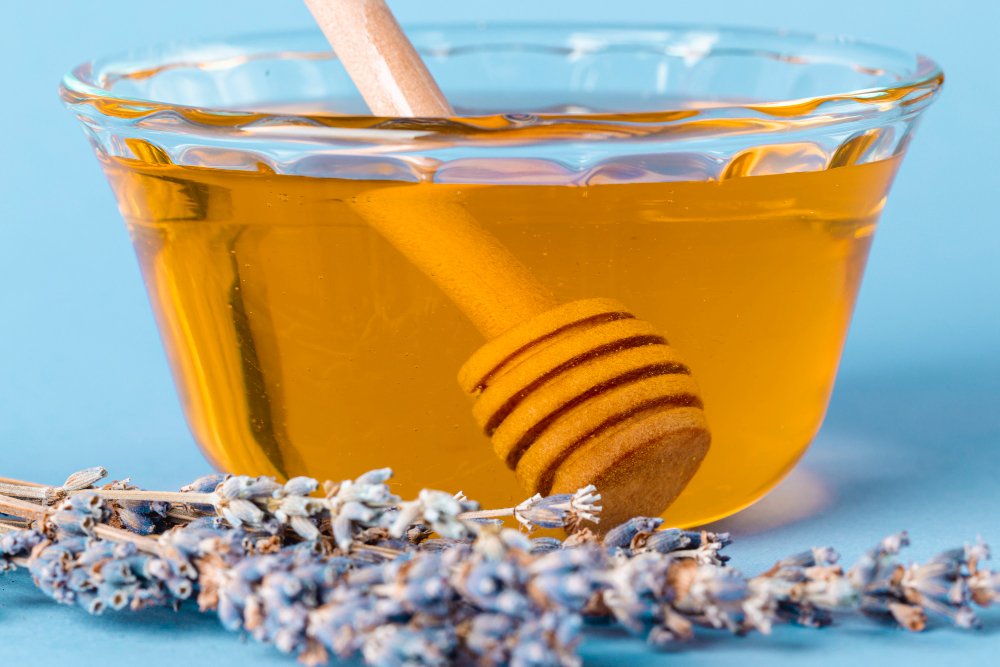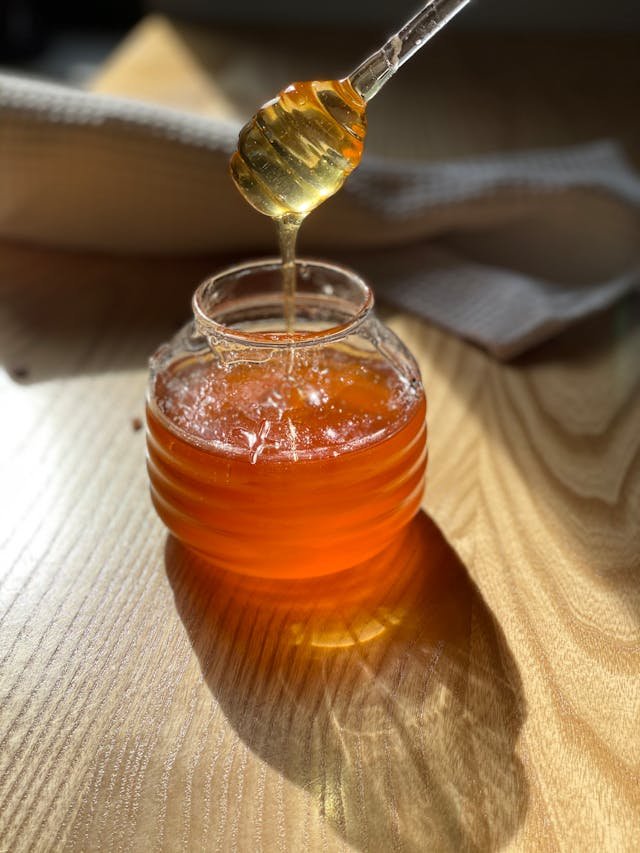Sage honey is a mild, slow-granulating, monofloral honey. It is made from sage flower nectar. Sage honey is prized for its antibacterial properties and health benefits. It is valued for cooking, skincare, and herbal remedies. This rare honey, especially from California, is a natural sweetener. It’s also a DIY remedy for coughs and to boost immunity. Learn about its unique taste, benefits for skin and hair, and how to make sage-infused honey at home. Find out where to buy high-quality sage honey. It’s a favorite among monofloral honeys.
What is Sage Honey?
Sage honey is a special type of honey made from the nectar of sage flowers. It’s known as a monofloral honey, which means bees collect nectar mainly from one plant, in this case, sage. This gives the honey a unique flavor and benefits.
Sage honey is mild and sweet, with a light, delicate taste. It’s different from other honeys. It granulates slowly, so it stays liquid longer. Most of this honey comes from California’s sage plants. They produce some of the world’s best sage honey.
In this article, we will explore everything about sage honey, from its origins to its many uses. We’ll start by discussing what sage honey is and how it’s made. Next, we’ll explore its many health benefits. Its antibacterial properties make it a top choice for natural remedies. You’ll also learn its culinary uses, and how to use it in skin and hair care. Plus, I’ll show you how to make sage-infused honey at home. By the end of this article, you’ll know all the reasons to add sage honey to your kitchen and beauty routine. It’s a versatile and healthy choice.
The Origin of Sage Honey
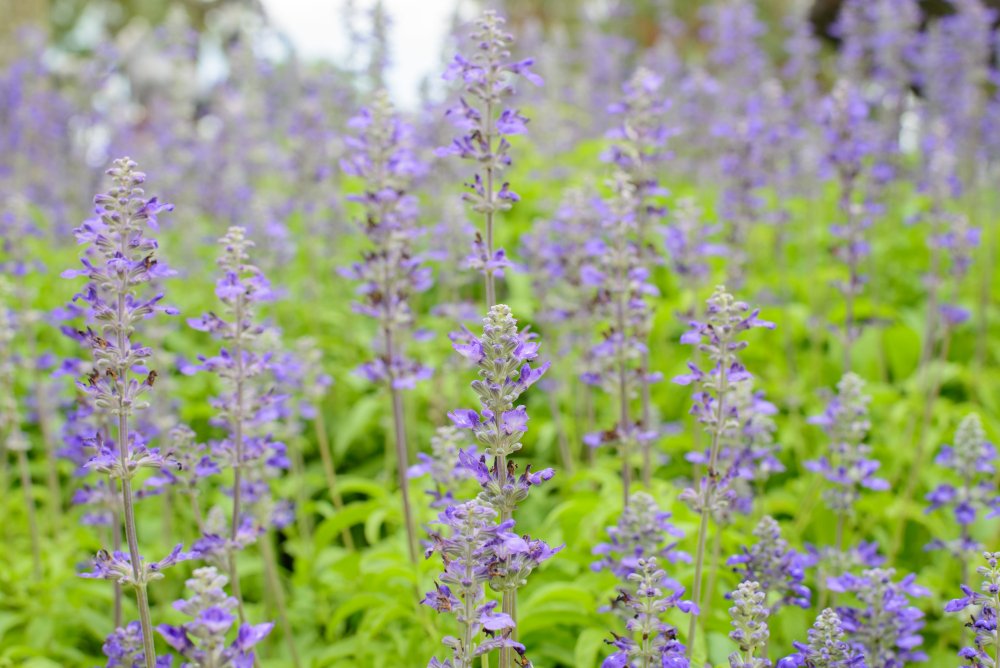
Where Sage Honey Comes From
Sage honey is made from nectar collected by bees from sage flowers. Sage plants are particularly well-suited to Mediterranean climates, which feature warm, dry conditions. These plants thrive in areas with 12 to 20 inches of rain and 65 to 85°F temperatures. The National Honey Board says sage honey is made in regions with these conditions. This gives it a unique flavor and quality.
California Sage Honey
California is one of the most notable sources of sage honey. The state’s climate and soil conditions are ideal for sage plants. California makes about 40% of the U.S. honey, including a lot of sage honey. Studies show that California sage honey has a unique taste. It comes from the region’s specific environmental factors. The state’s sage honey has a mild, sweet flavor. It granulates slowly, so it stays liquid longer than many other honeys. This honey is prized both locally and internationally. It shows the high quality and unique traits of honey from California’s sage-rich areas.
How is Sage Honey Made?
Sage Honey Production
Sage honey comes from a fascinating process. It starts with bees and sage plants. Here’s how it unfolds:
Nectar Collection: Bees collect nectar from the flowers of sage plants. Sage plants bloom in warm, dry climates, which is ideal for honey production. The bees visit the sage flowers. They use their proboscis to gather nectar and store it in their honey stomachs.
Honey Creation in the Hive: Once the bees return to the hive, they transfer the nectar to the worker bees. These bees then process the nectar by mixing it with enzymes. The nectar is in honeycomb cells. The bees flap their wings to dehydrate it, reducing its moisture. In this way, it turns the nectar into honey.
Harvesting: Beekeepers harvest sage honey by removing the honey-filled frames from the beehive. The frames are placed in a honey extractor, which uses centrifugal force to spin the honey out of the combs.
How is Sage Honey Processed?
Extraction: After harvesting, the honey is extracted from the honeycomb frames. It is usually done using a honey extractor. It is a machine that spins the frames to separate the honey from the wax.
Filtering: The honey is then filtered to remove any bee parts, wax, or debris. This step ensures that the honey is clean and ready for packaging.
Bottling: The filtered honey is bottled and labeled. For raw sage honey, it’s left unheated to preserve its natural nutrients and enzymes. Some processing may involve slight heating of the honey to make it easier to bottle. But, excessive heating is avoided to preserve its benefits.
Granulation Control: Sage honey naturally granulates slowly due to its high fructose content. Beekeepers often store honey in ways that prevent rapid crystallization. This keeps it liquid for longer.
Sage Honey Benefits
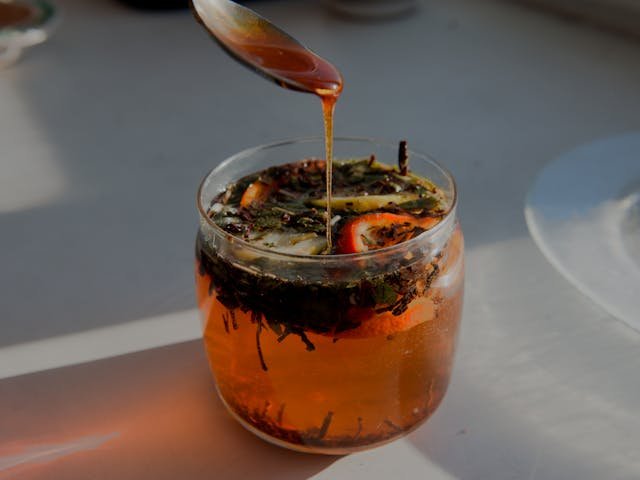
Sage Honey Antibacterial Properties
Sage honey is recognized for its strong antibacterial effects. Studies support its efficacy:
- A study found that sage honey kills harmful bacteria, like Staph and E. coli. It was in the Journal of Apicultural Research. The study found that sage honey is more antibacterial than many other honeys. This is due to its phenolic content. [^1]
- Wound Healing: A study in Wounds found that sage honey heals wounds better than some other honeys. The honey’s antimicrobial properties help in preventing infection and accelerating tissue repair. [^2]
Sage Honey for Health and Wellness
Sage honey offers various health benefits supported by research:
- High in Antioxidants: A Journal of Food Science study found sage honey has antioxidants. They are phenolic. They help to make harmful free radicals in the body. It is comparable to other antioxidant-rich honeys like manuka and buckwheat. [^3]
- Supports Digestive Health: A study found that honey, including sage honey, aids digestion. Its natural enzymes are the reason. These enzymes help in breaking down food and improving gut health. [^4]
- A study in the Journal of Clinical Immunology found that honey boosts immunity. Its antioxidants and nutrients are the reason. Sage honey’s high antioxidant content contributes to this effect. [^5]
Sage Honey vs Other Monofloral Honeys
Here’s a comparison of sage honey with other monofloral honey:
Honey Type | Flavor Profile | Granulation | Antioxidant Content | Benefits |
Sage Honey | Mild, delicate, herbal | Slow | High in phenolic compounds | Antibacterial, digestive health, boosts immunity |
Manuka Honey | Rich, medicinal, bold | Medium to slow | Very high (MGO) | Antibacterial, wound healing, digestive aid |
Buckwheat Honey | Strong, malty, earthy | Medium to fast | High, with a range of antioxidants | Antioxidant-rich, cough relief, immune support |
Clover Honey | Mild, sweet, floral | Slow | Moderate | General health, soothing, mild energy boost |
References:
- Journal of Apicultural Research – “Antibacterial Activity of Sage Honey”
- Wounds – “Comparative Study on Wound Healing Properties of Honey”
- Journal of Food Science – “Antioxidant Properties of Sage Honey”
- International Journal of Food Sciences and Nutrition – “Digestive Benefits of Honey”
- Journal of Clinical Immunology – “Honey’s Role in Immune System Support”
What Does Sage Honey Taste Like?
Sage honey is known for its distinct and gentle flavor profile. Here’s what to expect:
Mild-Flavored Honey
- Taste Profile: Sage honey has a mild, delicate flavor with subtle herbal notes. It is less intense than honeys like buckwheat or manuka. But, it has a pleasant sweetness that doesn’t overpower. Its flavor is often described as smooth with hints of sage, which adds a light, herbal undertone. This makes it a versatile choice for a variety of culinary uses.
- The Journal of Sensory Studies says sage honey’s mildness suits those who prefer a milder taste than stronger honeys. It provides a balanced sweetness without the robust flavor found in darker honeys. [^1]
Slow Granulating Properties
- Granulation: Sage honey tends to granulate slowly. It means it crystallizes more slowly than many other honeys. So, it stays liquid for longer. The slow granulation process keeps its smooth texture and makes it easier to use in recipes.
- Impact on Usage: The International Journal of Food Science says slow granulation of sage honey keeps it pourable. It is easy to mix into foods and drinks. This feature is useful for baking and cooking. A smooth consistency is often preferred. [^2]
References:
- Journal of Sensory Studies – “Flavor Profiles of Different Honey Types”
- Int. J. Food Sci. – “Granulation Patterns in Honey and Their Culinary Implications.””
Sage Honey for Skin and Hair

Sage Honey for Skin Care: Moisturizing and Healing
Sage honey offers several benefits for skin care. Its natural properties make it great for moisturizing and healing skin.
- Moisturizing: Sage honey is a natural humectant, which means it helps retain moisture. It hydrates the skin and gradually makes it soft and smooth. The Journal of Dermatological Science says that honey, including sage honey, can improve skin hydration by up to 30% with regular use. [^1]
- Healing: Sage honey has anti-inflammatory and antimicrobial properties. It can help soothe irritated skin and promote faster healing of minor cuts and wounds. The International Journal of Dermatology says honey’s enzymes and antioxidants reduce inflammation. They also speed up skin repair. [^2]
- How to Use for Skin: Apply sage honey directly to the skin as a mask or mix it with other natural ingredients like yogurt or aloe vera for added benefits. Mix it on for about 15-20 minutes, and add warm water. Regular use can enhance skin texture and tone.
How to Use Sage Honey for Hair Health
Sage honey is also beneficial for hair care due to its nourishing properties:
- Conditioning: Sage honey can help condition the hair, making it soft and manageable. It locks in moisture, reducing dryness and brittleness. The Journal of Cosmetic Science shows that honey can condition hair deeply. It does this without leaving a greasy residue. [^3]
- Scalp Health: Its antibacterial and antifungal materials can help maintain a healthy scalp. Sage honey may assist in reducing dandruff and soothing an itchy scalp. A Journal of Dermatology study found that honey helps scalp health. Its natural agents prevent bacteria. [^4]
- How to Use for Hair: Mix sage honey with your regular conditioner. Or, make a hair mask by combining it with coconut or olive oil. Use the mixture to your hair, focusing on the ends. Take it on for 20-30 minutes, then mix thoroughly.
References:
- Journal of Dermatological Science – “Effects of Honey on Skin Hydration and Barrier Function”
- International Journal of Dermatology – “Antimicrobial and Anti-Inflammatory Properties of Honey”
- Journal of Cosmetic Science – “The Conditioning Effects of Honey on Hair”
- Journal of Dermatology – “Honey as a Natural Remedy for Scalp Health”
Sage-Infused Honey: A DIY Guide
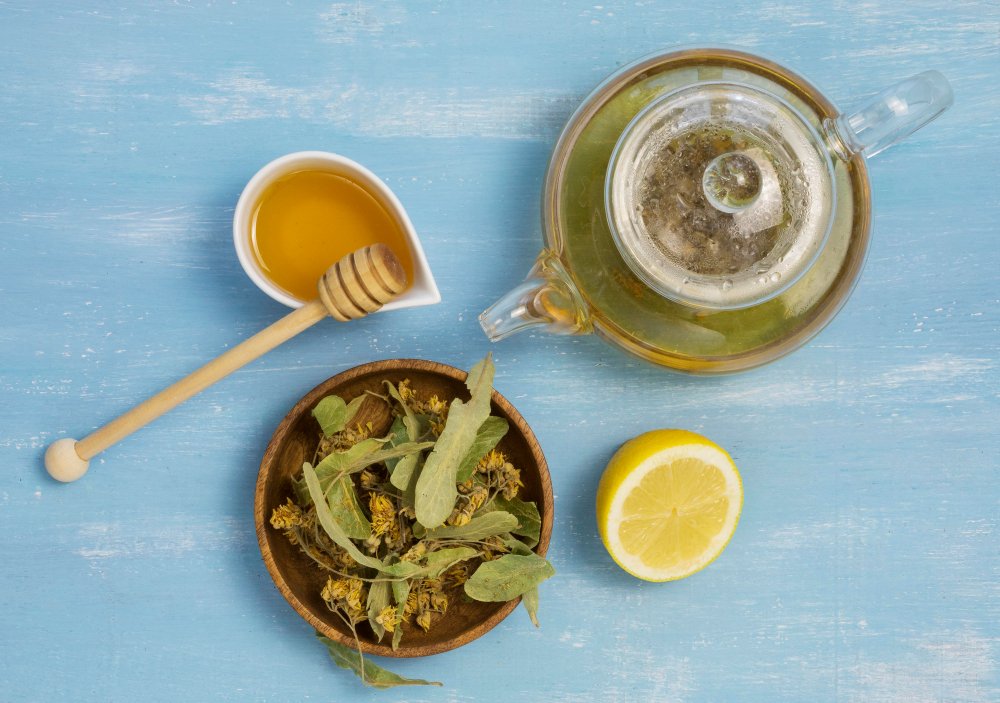
Sage-infused honey is a mix of honey and sage. It has the sweetness of honey and the aroma of sage. Infusing honey with sage is a simple way to create a flavorful addition to your pantry. Here’s a step-by-step guide to making your own sage-infused honey:
Ingredients:
- 1 cup of raw honey
- 1/4 cup of fresh sage leaves (or 2 tablespoons of dried sage leaves)
Instructions:
- Prepare the Sage: Rinse fresh sage leaves under running water. Then, dry them with a paper towel. For dried sage, ensure it’s clean and free from debris.
- Heat the Honey: Place the honey in a saucepan and heat it gently over low heat. A Journal of Food Science study says to heat honey cautiously. It will preserve its beneficial properties. Aim for a temperature of around 95-104°F (35-40°C) to avoid destroying nutrients.
- Add Sage: Once the honey is warm, add the sage leaves. Stir the mixture to ensure even distribution of sage throughout the honey.
- Infuse: Allow the sage to infuse in the honey for 20-30 minutes. A study in Food Chemistry found that herb-infused honey is tastier and more nutritious. Stir occasionally to help the infusion process.
- Strain the Honey: After infusion, remove the saucepan from heat and let it cool slightly. Strain the sage leaves out using a fine-mesh strainer or cheesecloth. A study in the Journal of Agricultural and Food Chemistry found that straining removes unwanted particles. It ensures a smooth, clear product.
- Store: Pour the strained honey into a clean, airtight jar. Store in a cool, dark place. The National Honey Board says that, if stored well, infused honey can last a year without losing much flavor or quality.
Tips:
- Longer Infusion: For a stronger sage flavor, let the sage steep in the honey for up to 48 hours. A study in Herbal Medicine says that longer infusion times can enhance the herbal notes.
- Mixing Herbs: Experiment with adding other herbs like rosemary or thyme. Herbal Gram published research on the benefits of blending herbs. It can create unique flavors and health benefits.
- Label and Date: Always label and date your jar to track its freshness and ensure optimal use.
Benefits:
Sage-infused honey adds a unique flavor to your dishes. It may also have health benefits. Sage is popular for its anti-inflammatory and antioxidant properties. Studies in the Journal of Medicinal Food support this. Research in Pediatric Research found that honey can soothe sore throats. It also has antimicrobial benefits.
Make your own sage-infused honey. It’s a tasty, homemade treat. It will add an herbal touch to your cooking.
References:
- Journal of Food Science – Effects of heating on honey’s nutritional properties.
- Food Chemistry – Herbal infusion and its effects on flavor and nutrition.
- Journal of Agricultural and Food Chemistry – Straining methods for honey.
- National Honey Board – Storage and shelf life of honey.
- Herbal Medicine – Impact of infusion time on flavor.
- HerbalGram – Benefits of blending herbs.
- Journal of Medicinal Food – Sage’s health benefits.
- Pediatric Research – Honey’s antimicrobial properties.
Herbal Remedies with Sage Honey
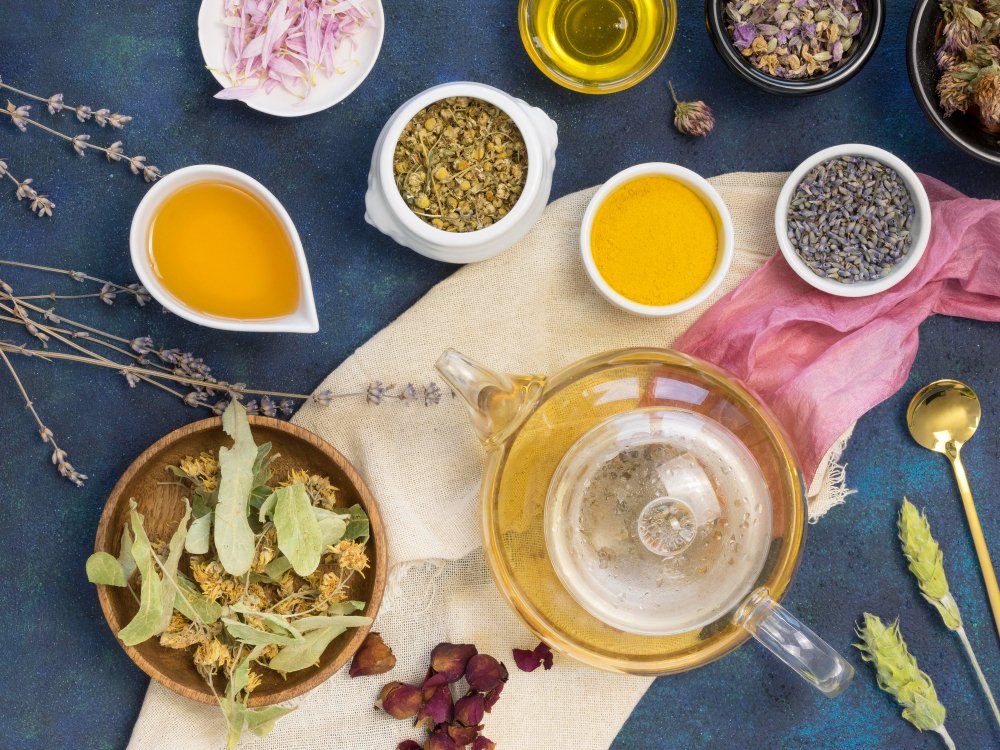
Sage honey is a potent natural medicine. It combines honey’s antibacterial and antioxidant properties with sage’s medicinal benefits. It is in herbal remedies for respiratory issues, digestive health, and wound healing. Let’s explore how to use its benefits effectively.
DIY Medicinal Honey Recipes
- Sage Honey for Sore Throats
- Ingredients:
- 1 tablespoon sage honey
- 1/4 teaspoon ground ginger
- 1 cup warm water
- Mix all ingredients in warm water and enjoy the mixture at a leisurely pace. Sage honey’s antimicrobial properties, combined with ginger, soothe the throat and reduce inflammation. Phytotherapy Research shows that sage eases throat pain and swelling.
- Digestive Aid with Sage Honey
- Ingredients:
- 1 tablespoon sage honey
- 1 teaspoon apple cider vinegar
- 1 cup warm water
- Method: Combine ingredients and drink before meals. This mixture promotes healthy digestion and balances stomach acidity. Honey helps digestion by coating the digestive tract. Research in the Journal of Herbal Pharmacotherapy found that sage stimulates digestive enzymes.
- Wound-Healing Balm
- Ingredients:
- 2 tablespoons sage honey
- 1 teaspoon coconut oil
- 5 drops lavender essential oil
- Method: Mix ingredients and apply to minor cuts or burns. Sage honey has natural wound-healing properties. Research in the Wounds journal supports its use as a topical treatment. It can speed up tissue repair and lower infection risk.
Sage Honey as an Herbal Remedy
Sage honey has been used for centuries in herbal medicine. It’s especially popular for respiratory and digestive issues. It has high antioxidants and antimicrobial activity. A study in Frontiers in Microbiology shows that honey inhibits bacterial growth. Sage adds anti-inflammatory effects.
Sore Throats and Coughs: Sage is a natural expectorant. It clears mucus and eases breathing during a cold. The Journal of Alternative and Complementary Medicine says sage honey can reduce coughs.
Digestive Health: Sage honey can soothe indigestion and bloating. Its prebiotic nature supports healthy gut flora. Combined with sage, it eases stomach discomfort, as found in the journal Food & Function.
Wound Care: Honey has long healed wounds. Combined with sage, it works better. The Journal of Wound Care says sage helps wounds heal faster and with less scarring. Its anti-inflammatory properties are the reason.
Sage Benefits in Medicinal Honey
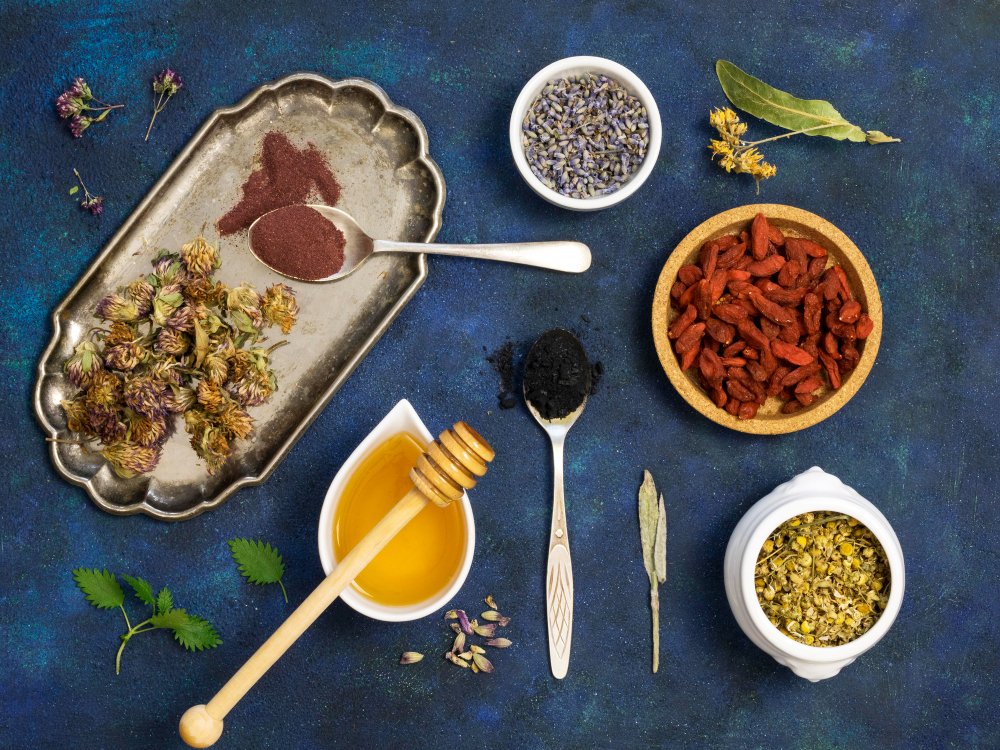
Sage has many benefits when used in honey. It boosts the healing properties of medicinal honey.
- Antioxidant Boost: Sage is high in antioxidants like rosmarinic acid. They help neutralize free radicals. Its antioxidants, plus those in honey, fight oxidative stress. This stress is connected to aging and chronic diseases.
- Anti-Inflammatory Action: Research from Planta Medica shows that sage can reduce inflammation. So, it is a great remedy for arthritis, respiratory infections, and skin irritations.
- Cognitive Health: Sage has been studied for its ability to boost memory and focus. A study in Psychopharmacology found that sage honey may help older adults’ brains. It was due to regular consumption of it.
Use sage honey in your herbal remedies. It has culinary and medicinal uses
Uses of Sage Honey in Cooking
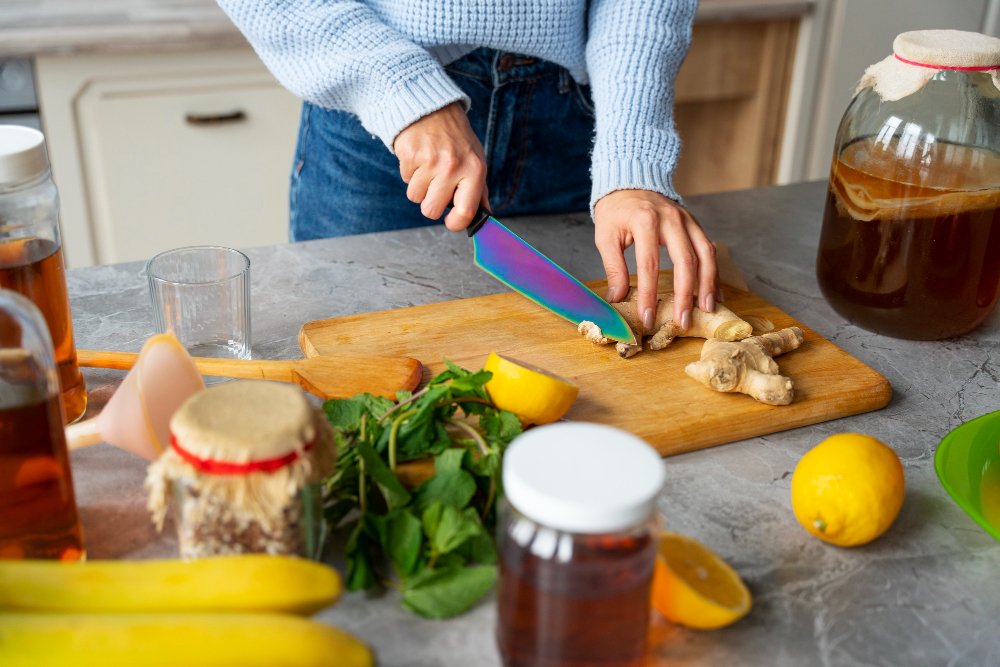
Sage honey is a versatile kitchen ingredient. It adds a different flavor and has health benefits. Its distinct taste makes it an excellent choice for various recipes. Here’s how to use sage honey in your cooking:
How to Use Sage Honey in Recipes
- Sage Honey Glaze for Meat
- Ingredients:
- 1/4 cup sage honey
- 2 tablespoons soy sauce
- 1 tablespoon olive oil
- 1 garlic clove, minced
- Method: Combine all ingredients in a bowl. Brush the mixture onto meats such as chicken or pork before roasting or grilling. Sage honey adds a rich, earthy sweetness that caramelizes beautifully. A study in the Journal of Culinary Science & Technology found that honey glazes can enhance the flavor and texture of roasted meats.
- Sage Honey Salad Dressing
- Ingredients:
- 2 tablespoons sage honey
- 1/4 cup balsamic vinegar
- 1/4 cup extra virgin olive oil
- Salt and pepper to taste
- Method: Mix all ingredients in a bowl until well combined. Layer over salads for a sweet and tangy dressing. Sage honey’s distinctive flavor adds depth to the dressing. Food Chemistry research shows honey in dressings can balance acidity and improve flavors.
- Sage Honey Muffins
- Ingredients:
- 1/2 cup sage honey
- 1/2 cup butter, softened
- 1 cup flour
- 1/2 cup milk
- 1 egg
- Method: Cream together the butter and sage honey, then add the egg and mix. Gradually incorporate flour and milk, mixing until smooth. Bake it until golden brown. Sage honey adds a subtle herbal note to baked goods. The Journal of Food Science says honey can improve texture and add moisture in baked goods.
Sage Honey for Sweetening and Flavoring
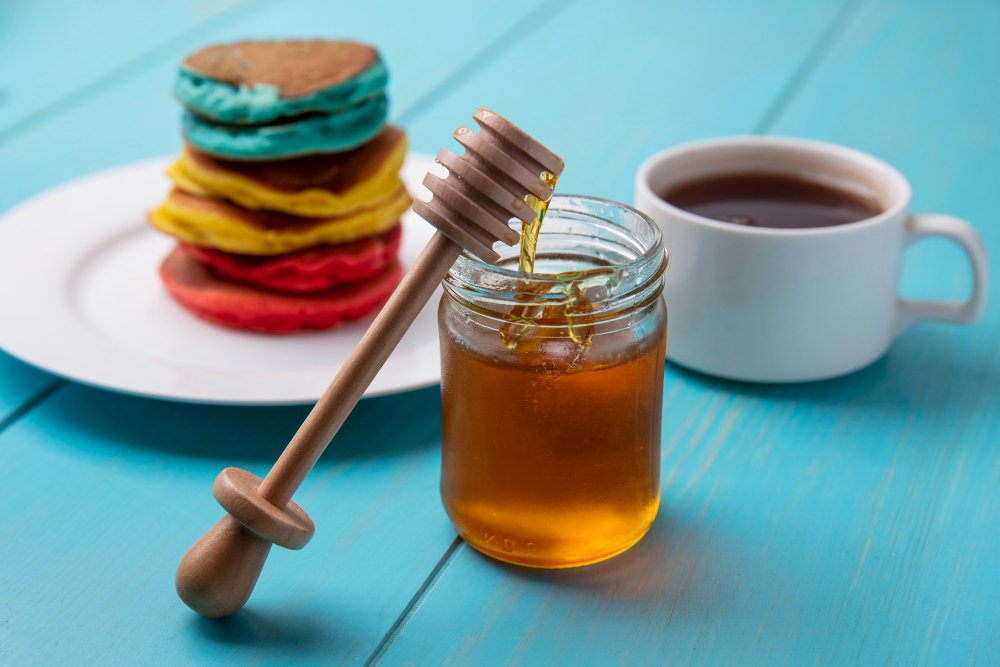
- Sweetening Beverages
- Method: Stir a spoonful of sage honey into hot or iced tea for a flavorful twist. It’s also great in coffee or herbal infusions. Sage honey adds a mild, aromatic sweetness. It enhances the drink without overpowering it. The American Journal of Clinical Nutrition says honey is healthier than refined sugars.
- Flavoring Yogurt and Oatmeal
- Method: Drizzle sage honey over yogurt or mix it into oatmeal for a naturally sweet flavor. It can replace traditional sweeteners while adding a unique herbal note. A study in Nutrients suggests that honey can boost the nutrition of breakfast foods. It adds antioxidants and nutrients.
- Homemade Sauces and Marinades
- Use sage honey in barbecue, marinades, or dipping sauces. It adds complexity and a hint of sweetness. It pairs well with savory and spicy flavors, creating a balanced taste. A study in the Journal of Food Processing & Preservation shows that honey can enhance flavor and preserve sauces.
Use sage honey in these ways. You can explore its versatility. It will enrich your cooking with its unique taste and health benefits.
Sage Honey vs Other Honeys

Aspect | Sage Honey | Infused Honeys | Herbal Honeys | |
|---|---|---|---|---|
Flavor Profile | Strong, herbal, earthy, slightly bitter | Mild, floral, sweet | Varies based on infusion (e.g., lavender, cinnamon) | Varies based on herbs used (e.g., echinacea, ginger) |
Color and Texture | Dark amber to almost black; thick, rich, slow granulating | Light golden; smooth, runny, quick to crystallize | Depends on the base honey; often medium to dark, texture varies | Depends on the base honey and herbal extracts used |
Antioxidant Content | 17.1 mg of antioxidants per 100 grams (Journal of Food Science) | 5.4 mg of antioxidants per 100 grams (Journal of Agricultural and Food Chemistry) | Varies depending on herbs used; generally adds to antioxidant content | Varies; often high due to herbal infusions |
Specific Health Benefits | Potential digestive aid; high in antioxidants, with antibacterial and anti-inflammatory properties | General antioxidant benefits; supports overall wellness | Combines benefits of honey and infused ingredients; effects vary | Provides therapeutic effects from specific herbs; diverse medicinal uses |
Crystallization | Slow granulating; can remain liquid for months | Quick to crystallize; often solidifies within 6 months | Depends on the base honey; some may crystallize quickly depending on the infusion | Depends on the base honey and herbal extracts used |
Production Data | Produced mainly in California; accounts for about 10% of U.S. monofloral honey production (National Honey Board) | Widely produced globally; a major type of honey with a significant market share (International Honey Exporters Association) | Popular in artisanal and health food markets; growing trend (Organic Trade Association) | Increasingly popular in natural and health food markets; varies widely (Herbal Product Review) |
Where to Buy High-Quality Sage Honey

Where to Buy Sage Honey (Including California Sage Honey)
- Local Health Food Stores: Stores like Whole Foods and Sprouts sell high-quality sage honey, including California sage honey.
- Specialty Honey Shops: These stores focus on honey. They often carry various sage honey options, including local and organic brands.
- Farmers’ Markets: Local farmers’ markets can be a great place to find fresh, high-quality sage honey directly from producers.
- Online Retailers: Sites like Amazon and Thrive Market sell sage honey, including California sage honey. Brands like Manuka Health and Y.S. Eco Bee Farms are notable for their high-quality products.
Comparing Prices of Sage Honey
Retailer | Price Range (Per Pound) | Notes |
Local Health Food Stores | $12 – $20 | Prices vary by store and location; often higher for organic varieties. |
Specialty Honey Shops | $15 – $25 | Typically offers premium or artisanal honey. |
Farmers’ Markets | $10 – $22 | Prices vary depending on vendor and honey quality. |
Amazon | $12 – $28 | Includes shipping costs; broad range of brands and options. |
Thrive Market | $14 – $26 | Membership-based pricing; organic options available. |
This table shows where to buy high-quality sage honey. It also compares prices across different options
FAQs About Sage Honey
How Long Does Sage Honey Last? Sage honey has an indefinite shelf life when stored correctly. To nurture its quality, keep it in a cool, dry place away from direct sunlight. Honey’s high sugar content and low moisture prevent bacteria. It is good to eat for a long time. If sage honey crystallizes, it can be gently warmed to return to its liquid form.
Does Sage Honey Granulate? Yes, sage honey can granulate or crystallize over time. Granulation is a natural process where sugars in honey form crystals. Sage honey has a high fructose content, so it granulates slowly. This means it crystallizes more slowly, so it stays liquid longer than other honeys.
Is Sage Honey Safe for Children? Sage honey is safe for children over the age of one. It should not be given to infants under one year old because of the risk of botulism, a rare but serious illness. For older children, sage honey can be a healthy and natural sweetener. Always consult a healthcare provider before adding new food to a child’s diet.
What is Sage Honey Good For? Sage honey is valued for its unique flavor and potential health benefits. It is used for its antibacterial properties and soothing effects on the throat. Sage honey can also enhance the flavor of various dishes in cooking. Also, it is in herbal remedies for its antioxidant and antimicrobial qualities. It supports overall wellness.
Can Sage Honey Help with Allergies? Sage honey may help with allergies, especially if it’s locally sourced. Some think that eating honey with local pollen can build immunity to local allergens. This is based on the idea that small, regular exposures to pollen in honey might help the body adapt. However, scientific evidence supporting this is limited. Consulting with a doctor for personalized advice is recommended

